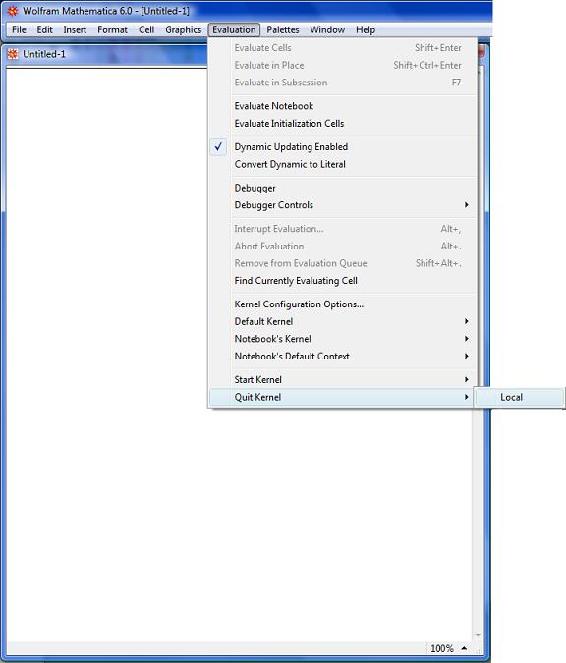

Visit the Publish for Player site to start converting your notebooks, and remember to bookmark it for future use. When you upload your notebook (.nb), a link to the translated Player file (.nbp) is immediately sent back to you by email. The entire process takes just a few seconds.
#Mathematica 7 help software
That means you can instantly begin deploying your work to others without any software barriers.
#Mathematica 7 help free
Using the new Publish for Player site, you can convert your interactive notebooks for use with the free Mathematica Player. Wolfram wrote: We're excited to announce a new service that makes it easy to publish and share Mathematica dynamic applications with anyone-whether or not they have Mathematica. The Wolfram Mathematica Learning Center offers hundreds of videos and other dynamic learning resources to maximize your use of Mathematica for your particular area of interest. Topics include creating notebooks and presentations, basic calculations, graphics and interactive models, data analysis, and more. One of Wolfram's most popular tutorials for new users is the Hands-on Start to Mathematica screencast series. Wolfram Insider is an electronic newsletter published by Wolfram with new products, services, and interesting discoveries. In the Help Browser you can find proper notation for functions and numbers that must be used within the program, as well as information about each of Mathematica’s functions. The Help Browser has sections on built-in functions, add-ons and links, getting started, tour, demos, the Mathematica Book, front end, as well as a master index. There is a short introductory screencast (see below). Help and Support: Mathematica offers a ten-minute tutorial upon entering the program that describes its many functions and abilities. In this case, your best bet is to quantify all but one parameter and use numerical solving.Category: Mathematical computation, analysis, visualization, and algorithm development would be the exact solution to your equation. Thus, MMA does the best it can, showing that the root of a polynomial which takes in an argument #1 (equivalent to #) and transforms it into #1^8 c^4. For some expressions, such as yours, which can be rewritten as a degree-8 polynomial, there exist no exact algebraic solutions. Thus, something like #^2 & evaluates to 9 (more examples in the linked tutorial). The ampersand denotes the end of the pure function (so that in more complicated expressions one could use several pure functions and limit what they do). In other words, the Slot indicates the parameter of my unnamed - "pure" - squaring function. Reveals that what is actually going on is Function,2]]. The Slot is treated as the argument in an anonymous function. While the tutorial will undoubtedly explain better that I could the entire topic of pure functions, which is what Slot, or # has to do with, I'll answer the specific question at hand. I'll save you from an explanation about radicals and finding polynomial roots.

So, Root is a kind of stenographic writing for roots of polynomials with order > 3. It's just the first root of the polynomial.

#Mathematica 7 help how to
That means Mathematica doesn't know how to calculate a symbolic result for the root. So, if your polynomial is $x^2 - 1$, using what we saw above: f = #^2 - 1 &īut if we try with a higher order polynomial: f = -1 - 2 #1 - #1^2 + 2 #1^3 + #1^4 & Root represents the exact kth root of the polynomial equation f=0. Or you may have a function operating on a list, like: f = #] + #] &

If you have a function operating on two variables, you could do: f = #1 + #2 & That is important for pairing & and # when you have nested functions. The & "pumps in" the expression into the # sign. If you want to define a function, $y(x)=x^2$, you just could do: f = #^2 &


 0 kommentar(er)
0 kommentar(er)
